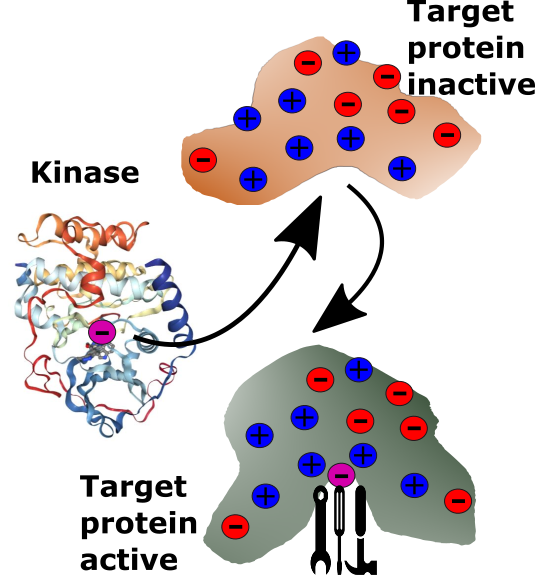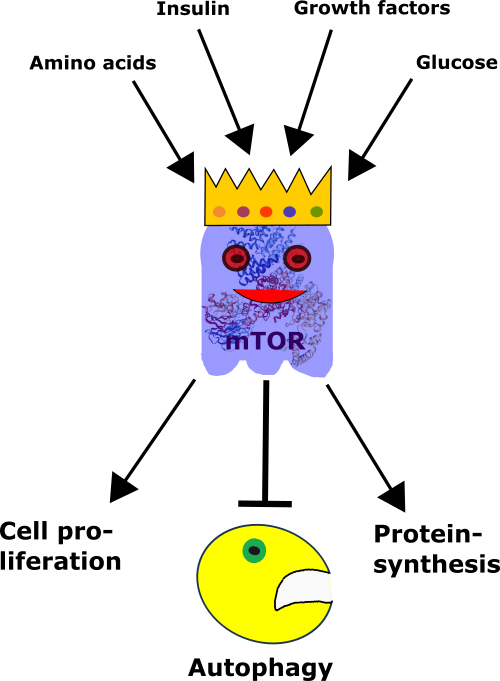Clean up your cells! The Best Protection Against Aging, Cancer, Alzheimer's disease & Co: 4. The mTOR: Construction or dismantling, that's the question.
“Off they run, till wet and wetter
Hall and steps immersed are lying.
What a flood that naught can fetter!
Lord and master, hear me crying! -
Ah, he comes excited.
Sir, my need is sore.
Spirits that I've cited
My commands ignore.“
(From the ballad „The Sorcerer's Apprentice“ by Johann Wolfgang von Goethe.)
Yes, yes, the old Goethe. Who does not know him and his works? Particularly, this timelessness in his works is remarkably. And even if some people don’t know who Goethe is, they surely know that there are always and everywhere problems. Nevertheless, the old Goethe already knew that the only constant in ominous developments is usually oneself. Unfortunately, this also applies to the ghosts in us.
Hello, nice to see you again. Part 4 of 5 of the big series about mTOR and autophagy. I know it's been a long time since the last article. I was pretty busy in terms of job, family & friends. But before we pass over to the big finale in the fifth part, we still have a few things to clarify. In the third part, we had learned who this packman in our cells is and how he is created. This packman symbolizes the mechanism of autophagy and is penetrated by sinister ghosts. These ghosts try to prevent Packman from doing his job (as in real life), so the big question is who these ghosts are and what we can do about them. Answering these questions could bring us a little bit closer to the mystery of eternal youth, health and bliss. So, let's go.
Probably some of you have already assumed that these ghosts are something has to do with biological molecules which are encoded on the DNA, such as proteins. And you are right, the ghosts are proteins. Proteins are very flexible and multifaced molecular machines carrying out numerous different tasks for us. In this context, you have to know that there is a complex crosstalk in our cells where the proteins are working together or fighting each other all the time [1]. The ghosts for their part are very special proteins (or enzymes) called kinases [2].

Basically, kinases are proteins that transfer negatively charged phosphate ions to other proteins ( and further molecules) [3]. You need to know that every protein consists of amino acids with different properties. For example, they may be fat-loving, water-loving or even charged [1, 4, 5]. Since each protein has a different amino acid composition, every protein is charged in a different way [6]. Now, if a kinase comes along and transmits a negatively charged phosphate ion to another protein, then this negatively charged ion completely disrupts the total charge of the protein. This has the consequence that a protein changes its shape (the so-called conformation) and is thereby activated or inactivated (depending on the kinase and the target) [6, 7]. In the example picture, the target protein only ejects its tools after phosphate transfer (purple circle with minus sign), which was previously hidden inside the protein. The goal of this procedure is to be able to turn proteins on or off as needed, as well as build entire signaling chains that then send messages across the cell [5]. This entire field of cellular interconnection is called signal transduction and is reminiscent of totally freaky circuits or something that no human being really understands. Since I do not want to overwhelm you with this absolute exciting, but extremely complex and hard to catch issue especially for beginners, just one fact should stay in mind: You have the control, your behavior determines what’s going on in your body. Indeed, the overlord kinase mTOR is one of the most powerful kinases and I hope that at least after the 5th article you will always think about mTOR in terms of improving your fitness. But what how is mTOR activated and what’s the main function of mTOR? The kinase mTOR is essentially activated by other kinases or by a cascade of steps, respectively [2]. Often there is a sensor in or on the cell, e.g. a receptor on the cell surface [5]. Such a receptor may be, for example, the insulin receptor. Insulin is released by the pancreas as soon as sugar enters the blood. For more information also check the article of Scienceblocks. Subsequently, insulin arrives at its receptor and activates a signaling cascade, which is primarily intended to enable the absorption of sugar into the cells of the human body. Moreover, the signaling cascade triggered by the insulin receptor, also activates mTOR and other targets [2, 8].

The activation of mTOR leads to an increased synthesis of proteins, promotes cell division and also prevents autophagy [2]. Therefore, mTOR can be considered as one of the big bosses among many different ghosts present in the cells. Now, of course, it is perfectly clear that mechanisms such as cell division and protein synthesis are absolutely important to us. Just think of athletes or children. Everything has to grow and flourish, no question about it. The problem with mTOR is simply that permanent growth without looking left and right can eventually create many problems [9]. Just imagine a world with an economy which grows forever. Can that work out? Maybe if it’s sustainable, but without taking the interests of humans and nature into account, disadvantages will occur one day. And that's exactly how it is in our cells. If the cell cycle is heated without end, without checking that everything is in good shape, without clearing potentially harmful toxic substances (such as broken proteins) it could become very uncomfortable [10]. Especially, when no one checks whether the cell is actually ready for entering into the next round of division, for instance by verifying the quality of the DNA, tremendous complications may arise [11]. And with problems like that, bad skin or bad mood are still the most innocuous problems [12].
I think that’s enough for the moment. I hope it’s clear how cells basically work and the reader understands the role of kinases within this system. The very important representative of the kinases, mTOR, will meet us again in the last (5th) article and we will see how this cellular switch decides the fate of your life. We will learn how we can use this switch to optimize our goals in life for staying young and healthy.
I hope that I will finish the article until Wednesday. Until then have a nice Sunday and a good start in the week.
See you in a few days.
Best,
Chapper

References:
The image with the kinase action, as well as the picture with the suppression of Packman by mTOR I have made by myself and can in principle be used freely. Please note, however, that the molecular structures of the proteins were found at www.rcsb.org. The tools of the activated protein were taking from Pixabay. But it would be nice if you could quote this article here. Thank you very much😉
Further information about the topic can be found here:
- Müller-Esterl, W., Biochemie: Eine Einführung für Mediziner und Naturwissenschaftler. 2004: Spektrum Akademischer Verlag.
- Laplante, M. and D.M. Sabatini, mTOR signaling at a glance. J Cell Sci, 2009. 122(Pt 20): p. 3589-94.
- Fabbro, D., S.W. Cowan-Jacob, and H. Moebitz, Ten things you should know about protein kinases: IUPHAR Review 14. Br J Pharmacol, 2015. 172(11): p. 2675-700.
- Peter Karlson, D.D., Jan Koolman, Georg Fuchs, Wolfgang Gerok, Ruth Hammelehle, Karlsons Biochemie und Pathobiochemie. Vol. Auflage: 15. 2005: Thieme.
- Gomperts, B., I. Kramer, and P. Tatham, Signal Transdcution. Second Edition ed. 2009: Academic Press.
- Kitchen, J., R.E. Saunders, and J. Warwicker, Charge environments around phosphorylation sites in proteins. BMC Struct Biol, 2008. 8: p. 19.
- Matte, A., L.W. Tari, and L.T. Delbaere, How do kinases transfer phosphoryl groups? Structure, 1998. 6(4): p. 413-9.
- Haeusler, R.A., T.E. McGraw, and D. Accili, Biochemical and cellular properties of insulin receptor signalling. Nat Rev Mol Cell Biol, 2018. 19(1): p. 31-44.
- Populo, H., J.M. Lopes, and P. Soares, The mTOR signalling pathway in human cancer. Int J Mol Sci, 2012. 13(2): p. 1886-918.
- Mathiassen, S.G., D. De Zio, and F. Cecconi, Autophagy and the Cell Cycle: A Complex Landscape. Front Oncol, 2017. 7: p. 51.
- Blagosklonny, M.V. and A.B. Pardee, The restriction point of the cell cycle. Cell Cycle, 2002. 1(2): p. 103-10.
- Whittel, N., Glow15 : a science-based plan to lose weight, rejuvenate your skin, and invigorate your life. 2018, Houghton Mifflin Harcourt,: Boston. p. 1 online resource.